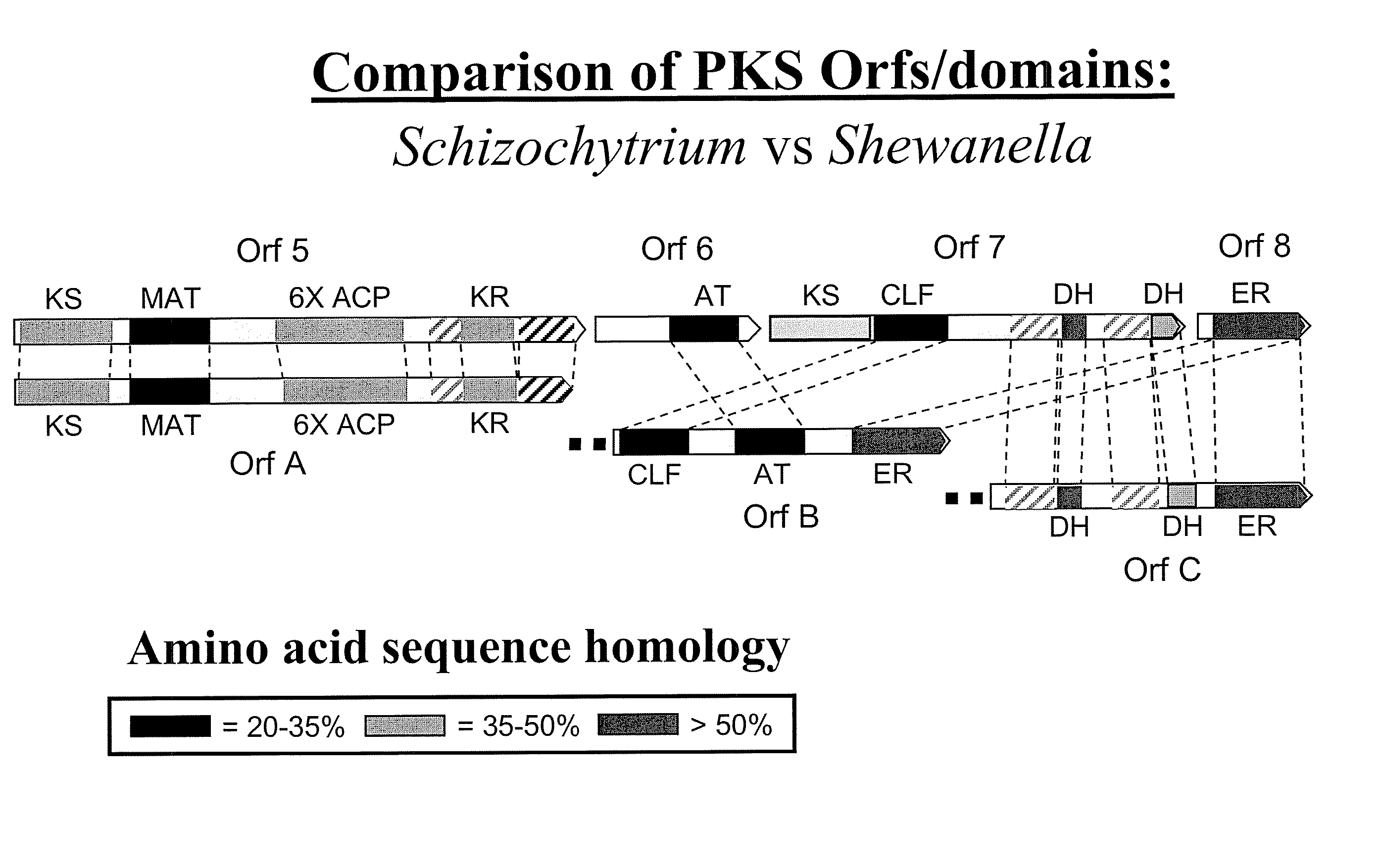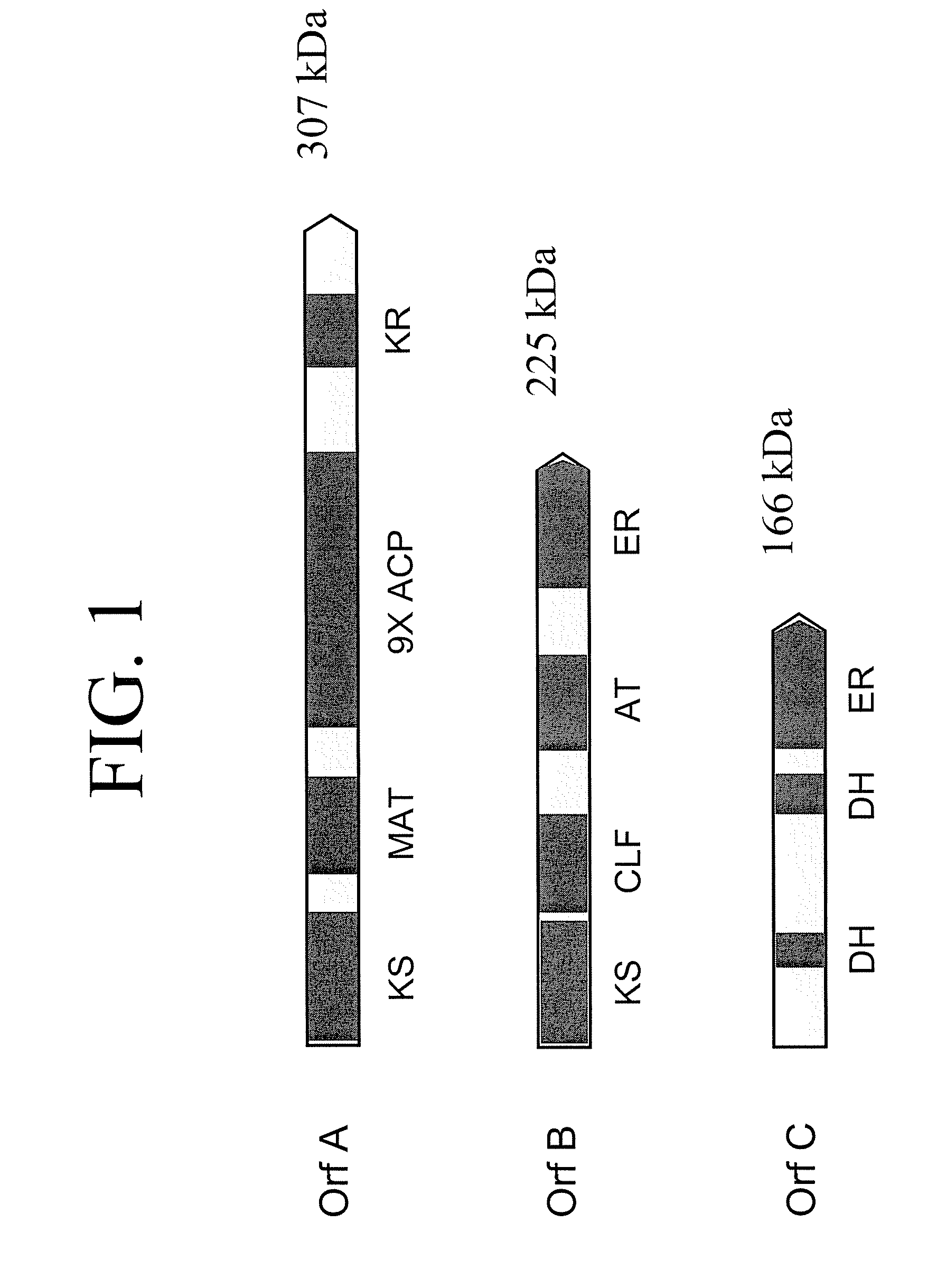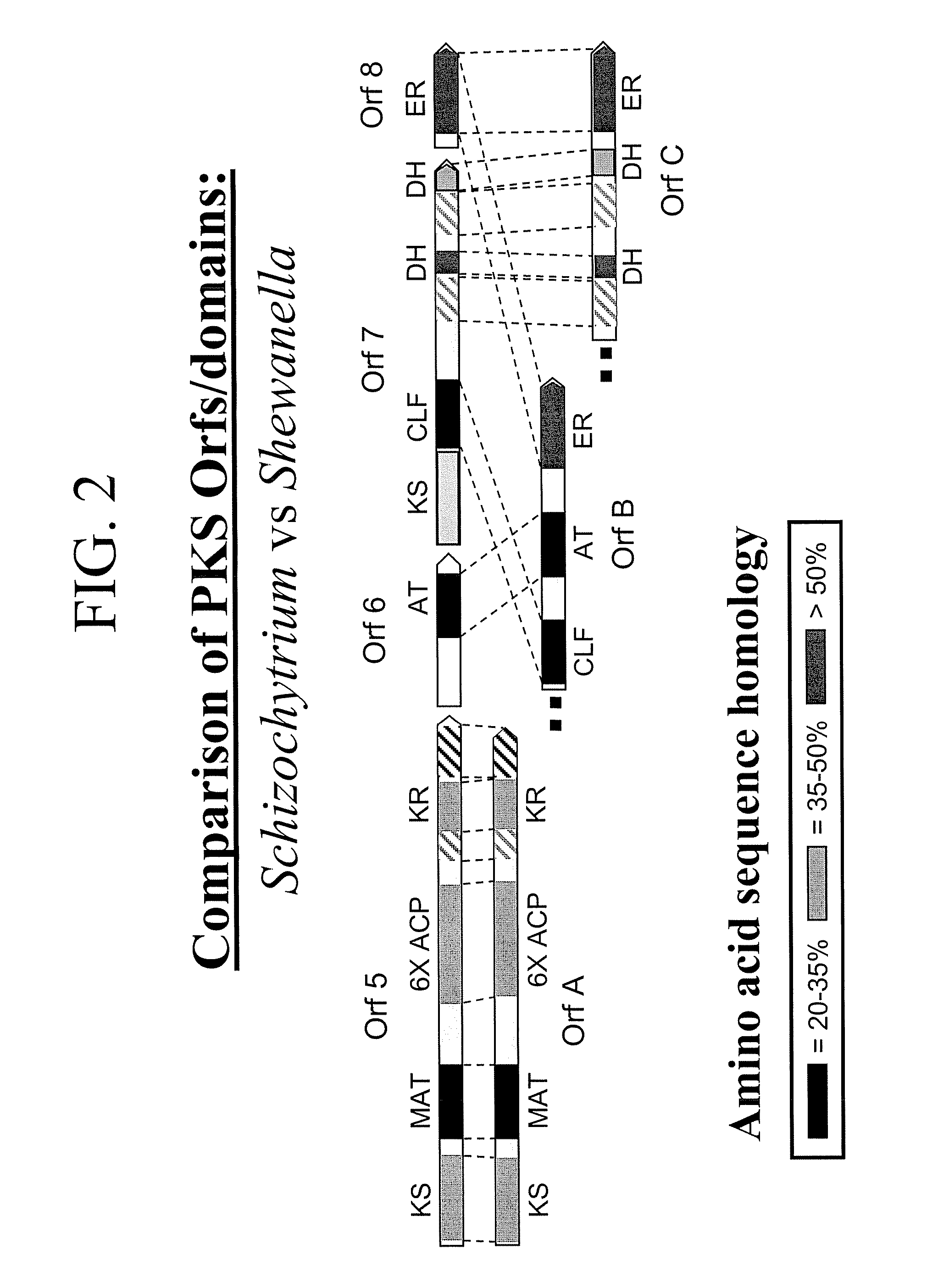Pufa polyketide synthase systems and uses thereof
a polyketide synthase and polyunsaturated fatty acid technology, applied in the field of polyunsaturated fatty acid (pufa) polyketide synthase (pks) systems, can solve the problems of declining fish stocks, insufficient commercial supply of pufas from natural sources and from chemical synthesis, and inability to be a sustainable resource. , to achieve the effect of increasing the ratio of dha to dpa produced by the schizo
- Summary
- Abstract
- Description
- Claims
- Application Information
AI Technical Summary
Benefits of technology
Problems solved by technology
Method used
Image
Examples
example 1
[0261] The following example, from U.S. patent application Ser. No. 10 / 124,800, describes the use of the screening process of the present invention to identify other non-bacterial organisms comprising a PUFA PKS system according to the present invention.
[0262]Thraustochytrium sp. 23B (ATCC 20892) was cultured as described in detail herein.
[0263] A frozen vial of Thraustochytrium sp. 23B (ATCC 20892) was used to inoculate a 250 mL shake flask containing 50 mL of RCA medium. The culture was shaken on a shaker table (200 rpm) for 72 hr at 25° C. RCA medium contains the following:
RCA MediumDeionized water1000mLReef Crystals ® sea salts40g / LGlucose20g / LMonosodium glutamate (MSG)20g / LYeast extract1g / LPII metals*5mL / LVitamin mix*1mL / LpH7.0
*PII metal mix and vitamin mix are same as those outlined in U.S. Pat. No. 5,130,742, incorporated herein by reference in its entirety.
[0264] 25 mL of the 72 hr old culture was then used to inoculate another 250 mL shake flask containing 50 mL of low...
example 2
[0271] The following example demonstrates that Schizochytrium Orfs A, B and C encode a functional DHA / DPA synthesis enzyme via functional expression in E. coli.
[0272] General Preparation of E. coli Transformants
[0273] The three genes encoding the Schizochytrium PUFA PKS system that produces DHA and DPA in Schizochytrium (Orfs A, B & C; SEQ ID NO:1, SEQ ID NO:3 and SEQ ID NO:5, respectively) were cloned into a single E. coli expression vector (derived from pET21c (Novagen)). The genes are transcribed as a single message (by the T7 RNA-polymerase), and a ribosome-binding site cloned in front of each of the genes initiates translation. Modification of the Orf B coding sequence was needed to obtain production of a full-length Orf B protein in E. coli (see below). An accessory gene, encoding a PPTase (see below) was cloned into a second plasmid (derived from pACYC184, New England Biolabs).
[0274] OrfB
[0275] The Orf B gene is predicted to encode a protein with a mass of ˜224 kDa. Initi...
example 3
[0284] The following example shows demonstrates that genes encoding the Schizochytrium PUFA PKS enzyme complex can be selectively inactivated (knocked out), and that it is a lethal phenotype unless the medium is supplemented with polyunsaturated fatty acids.
[0285] Homologous recombination has been demonstrated in Schizochytrium (see copending U.S. patent application Ser. No. 10 / 124,807, incorporated herein by reference in its entirety). A plasmid designed to inactivate Schizochytrium Orf A (SEQ ID NO:1) was made by inserting a Zeocin™ resistance marker into the Sma I site of a clone containing the Orf A coding sequence. The Zeocin™ resistance marker was obtained from the plasmid pMON50000—expression of the Zeocin™ resistance gene is driven by a Schizochytrium derived tubulin promoter element (see U.S. patent application Ser. No. 10 / 124,807, ibid.). The knock-out construct thus consists of: 5′Schizochytrium Orf A coding sequence, the tub-Zeocin™ resistance element and 3′Schizochytri...
PUM
 Login to View More
Login to View More Abstract
Description
Claims
Application Information
 Login to View More
Login to View More - R&D
- Intellectual Property
- Life Sciences
- Materials
- Tech Scout
- Unparalleled Data Quality
- Higher Quality Content
- 60% Fewer Hallucinations
Browse by: Latest US Patents, China's latest patents, Technical Efficacy Thesaurus, Application Domain, Technology Topic, Popular Technical Reports.
© 2025 PatSnap. All rights reserved.Legal|Privacy policy|Modern Slavery Act Transparency Statement|Sitemap|About US| Contact US: help@patsnap.com



